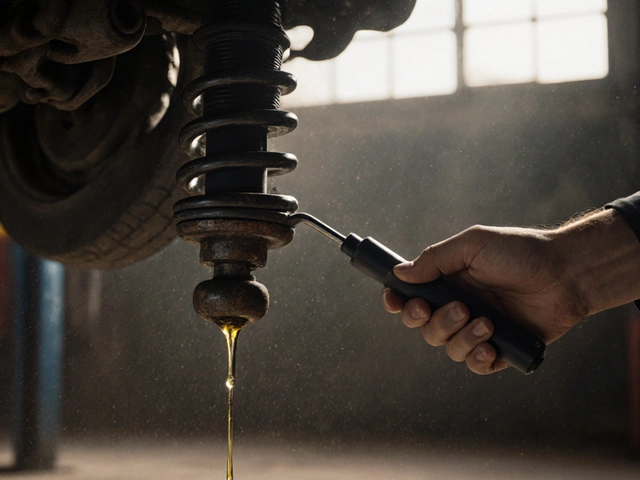Bad Suspension: How to Spot It, Why It Matters, and What to Do
Ever feel like your car is bouncing like a pogo stick or pulling to one side for no reason? That’s a classic hint that the suspension isn’t doing its job. A healthy suspension keeps your wheels glued to the road, absorbs bumps, and makes steering feel solid. When it goes bad, every drive can become a gamble.
How to Tell If Your Suspension Is Going Bad
First off, listen for clunking or rattling noises when you go over potholes or speed bumps. Those sounds usually mean a worn shock absorber or a broken spring is struggling.
Next, check your tire wear. Uneven or feathered tread patterns often point to a misaligned or sagging suspension component. If the inside of the tire is wearing faster than the outside, the camber is off.
Feel the steering wheel. If it vibrates at higher speeds or you get a shaky feeling when you brake, the suspension is probably compromised. Vibration can also come from worn ball joints or tie‑rod ends.Try the bounce test: press down hard on the front or rear of the car and let go. If the vehicle bounces more than once, the shocks or struts are losing their damping ability.
Finally, notice how the car handles turns. A car with bad suspension will feel loose, like it’s sliding, and you may notice the car pulling to one side even when the wheels are straight.
Risks of Driving With Bad Suspension
Driving with a sagging or broken suspension isn’t just uncomfortable – it’s unsafe. Poor suspension reduces tire contact with the road, which means longer stopping distances and a higher chance of losing control in wet conditions.
It also puts extra strain on other components. Brakes wear faster, steering parts get stressed, and the chassis can develop cracks over time. In short, a small problem can turn into a big, pricey repair.
All that extra wear shows up on your tyre bill, too. Bad suspension can cause premature tyre replacement, which adds up fast.
If you ignore the issue, you might also damage the wheel bearings or even the steering rack, leading to costly downtime.
Bottom line: the sooner you address a suspension problem, the cheaper and safer the fix will be.
For a quick DIY check, park on a flat surface, look under the car for any leaking fluid from shocks, and give the car a good push‑and‑release test. If anything feels off, it’s time to book a professional inspection.
When you head to a garage, ask the technician to check the shocks, struts, springs, control arms, and bushings. A full inspection will show you which parts need replacement and give you a clear cost estimate.
Regular maintenance can keep suspension issues at bay. Get your wheel alignment checked every 10,000 miles, replace shocks every 60,000‑80,000 miles, and inspect springs for cracks or rust during tyre rotations.
If you’re in Northwich, swing by Northwich Tyres Centre. Our team can diagnose bad suspension fast, recommend the right parts, and get you back on the road with a smooth, safe ride.
 26 June 2025
26 June 2025
Detect Bad Suspension: Signs, Symptoms & How to Check
Learn how to spot the warning signs of a bad car suspension, from bumpy rides to uneven tire wear. Find straightforward tips and steps to check if your suspension needs attention.
Latest Posts
-

How Do I Know What Size Exhaust I Need? Straightforward Guide for Perfect Fit
-

How to Improve Suspension Comfort: Simple Upgrades for a Smoother Ride
-

Which Part of My Suspension is Bad? A Practical Guide
-

Spark Plug Basics: What It Does and Why It Matters
-

Windscreen Wiper Basics: What Every Driver Should Know

0